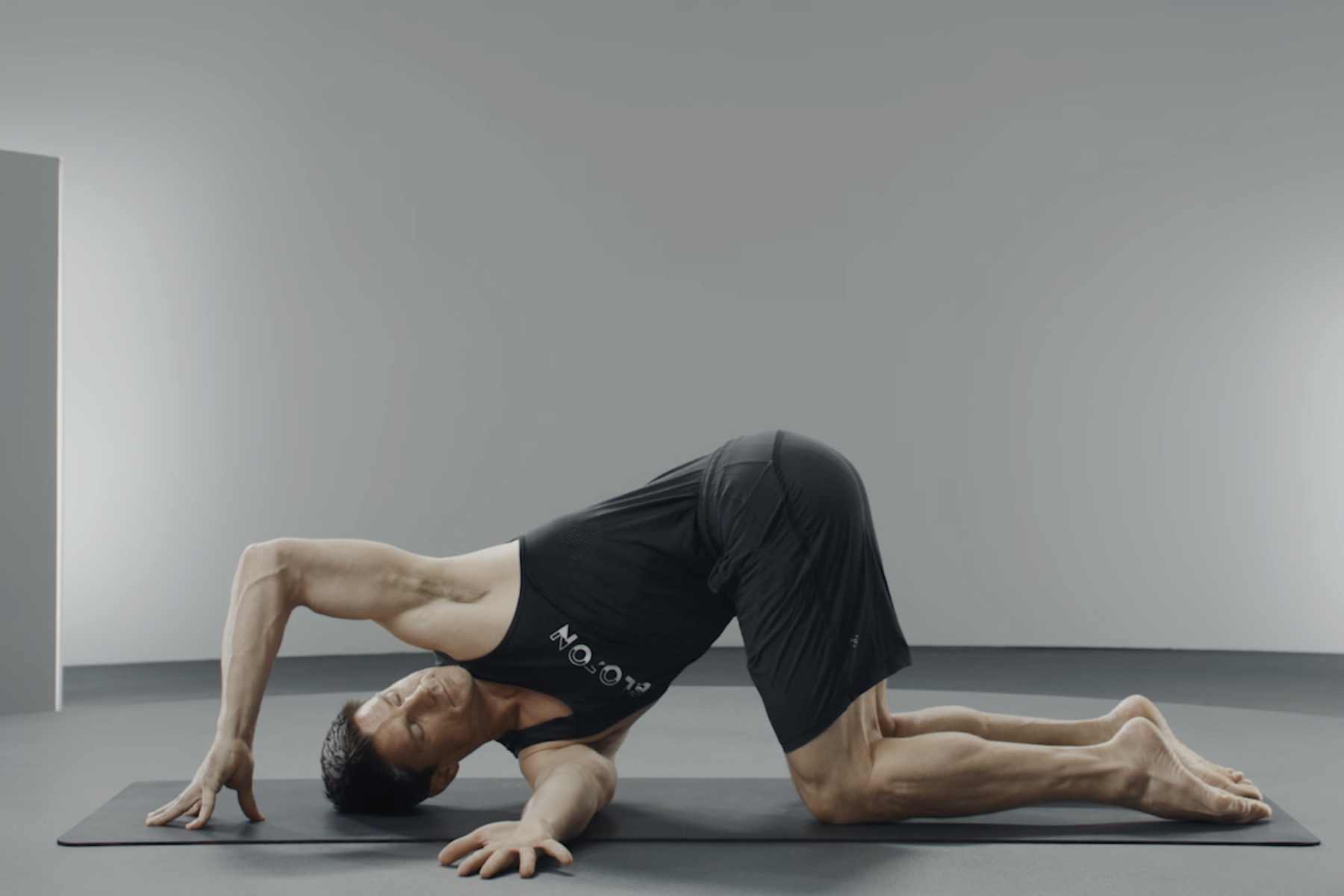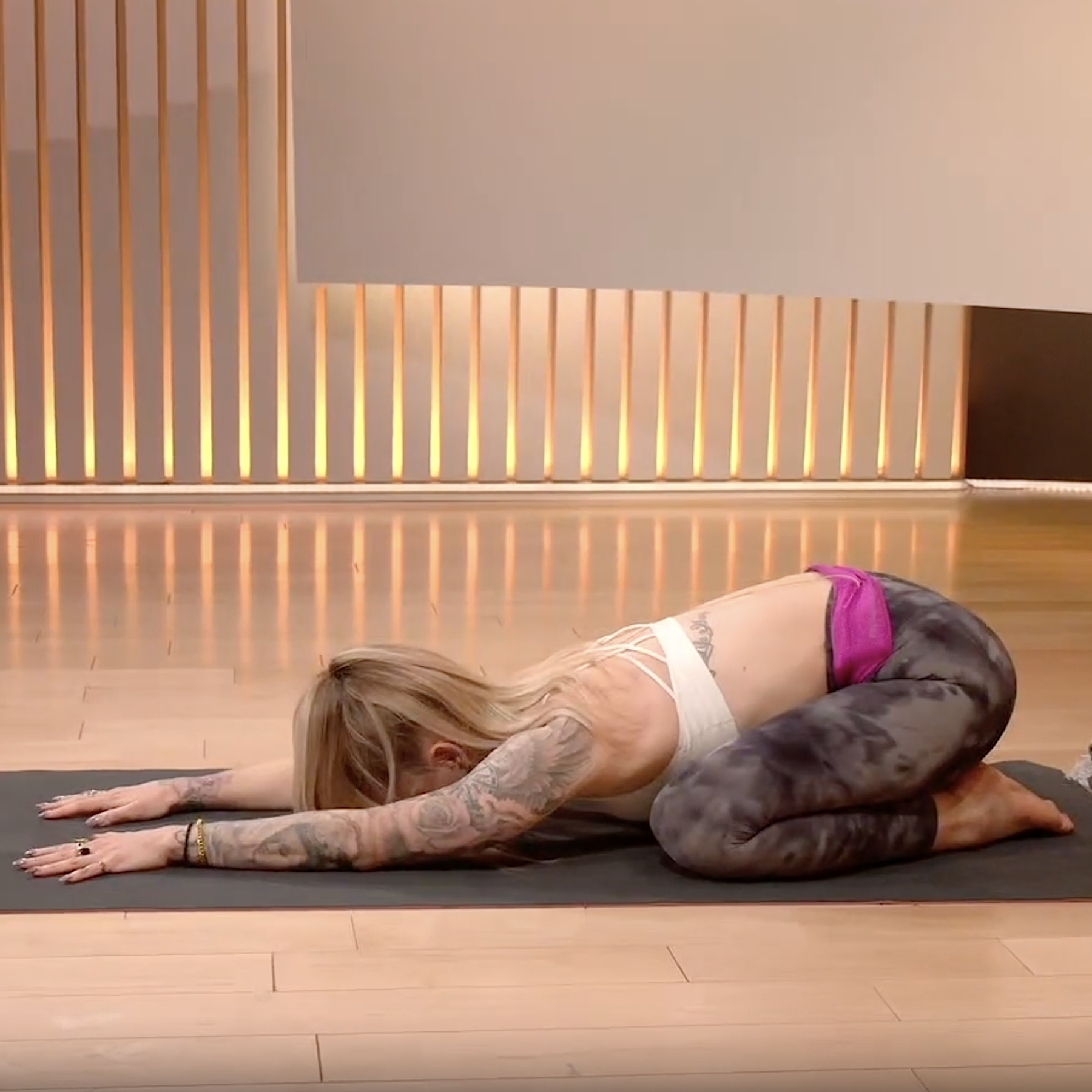
pixdeluxe/E+ via Getty Images
The Best Stretches for Targeting Tight Trapezius Muscles
Tight upper body? These stretches and yoga poses can help you get some relief.
By Leigh Weingus•
What Are the Trapezius Muscles and Where Are They Located?
Why Your Trapezius Muscles May Be Tight and Tense
3 Best Trapezius Stretches to Try
4 Yoga Poses to Help Stretch Your Trapezius Muscles
How to Add Trapezius Stretches to Your Routine
FAQs
If you’ve ever dealt with upper back and neck tension, you probably know how it can keep you from feeling and performing your best. Aside from neck stretches, there’s another type of stretch to add to your routine: trapezius stretches.
Upper back and neck tension is often correlated with tight trapezius (trap) muscles, and in the age of laptops, smartphones, and day-to-day stress, it’s natural for these muscles to get tight and tense. Luckily, there’s a lot you can do to stretch tight trapezius muscles.
From simple stretches and yoga poses, to modifications you can make to your posture throughout the day, here’s everything you need to know about your trapezius muscles and how to keep them nice and loose.
What Are the Trapezius Muscles and Where Are They Located?
According to physical therapist Devin Trachman, the trapezius muscle is a big triangular muscle that begins at the base of the skull and extends into the mid-back and across the shoulders. “It consists of an upper trap, middle trap, and lower trap,” she says. “These muscles play a crucial role in the movement and support of the neck and shoulder girdle.”
The upper portion of the trapezius helps elevate and rotate the shoulder blades, which allows for shrugging the shoulders and lifting the arms, Trachman adds. “The trap muscles also contribute to the movement of the head, which allows tilting, turning, and rotating motions,” she says. “The middle and lower portions of the traps assist in stabilizing and supporting the neck, which helps to maintain proper posture and prevent excessive forward head . The trapezius muscles also work in coordination with other muscles to support the spine and maintain proper , especially in the upper back and neck regions.”
Long story short: The trapezius muscles play a crucial role in performing various head and shoulder movements and providing stability and support to the upper body.
Why Your Trapezius Muscles May Be Tight and Tense
So, what are some common reasons why the trapezius muscles might be tight and tense? According to Peloton Instructor Hannah Corbin, bad posture is often the biggest culprit. “When the head is out of alignment, everything around it has to work harder to support the weight,” she says. In other words, all that slouching you’re doing in front of your laptop or over your phone probably isn’t doing your traps any favors.
Stress and tension can also lead to tight trap muscles, according to Trachman, as can past injury or trauma. “Previous injuries or trauma to the neck, shoulders, or upper back can cause the trapezius muscles to tighten up as a protective response,” she says. “A whiplash injury would be an example of this.”
Imbalances between the strength and flexibility of different muscles can also lead to overcompensation and strain on the trap muscles, Trachman adds. “Also, watch out for repetitive movements: Engaging in repetitive movements or activities, such as carrying heavy bags on one shoulder or constantly reaching overhead, can strain the trap muscles,” she says.
The Benefits of Stretching Your Trapezius Muscles
One of the biggest benefits of stretching your traps is gaining more range of motion in your neck, according to Hannah. “Improving neck range of motion can feel all sorts of fabulous,” she says. “Sometimes we don't realize how much tension we are carrying until we release it.”’
Stretching your traps can also improve your posture, according to Trachman. “Improving posture to promote better alignment, and reducing risk of injuries related to the neck, shoulders, and upper back, can be tremendously beneficial,” she says.
Try Peloton Upper Body Stretching and Mobility Classes
See all classes3 Best Trapezius Stretches to Try
Here are the best stretches to try for some relief. One reminder from Trachman to note: The stretches should not cause any pain. If you experience pain while doing the stretches, be sure to consult your doctor or a healthcare professional.
Upper Trapezius Stretch
Start by sitting or standing upright with good posture and relaxed shoulders.
Gently lean your head to one side, bringing your ear towards your shoulder.
For a more intense stretch, place your hand on the opposite side of your head and apply gentle pressure.
Hold for 20-30 seconds and repeat on the other side.
Repeat this 2-3 times total.
Shoulder Shrug
A shoulder shrug is considered more of an activation exercise, but this move can help you release tension in the neck and upper body before beginning a workout.
Start by sitting or standing in a relaxed posture.
Lift both shoulders up towards your ears. Hold for a few seconds, then relax and let your shoulders drop down.
Repeat this shrugging motion for 10-15 repetitions.
Across Body Stretch
Start by standing with both arms at your side.
Lift the arm to be stretched until it is parallel to the floor (90 degrees).
Hook the other arm around the arm you’re stretching just above the elbow.
Pull the arm you’re stretching toward your chest with the other arm. A stretch should be felt in the shoulder.
Hold for 20-30 seconds and repeat on the other side.
Repeat 2-3 times total.
4 Yoga Poses to Help Stretch Your Trapezius Muscles
If you’re into yoga, certain yoga poses can help stretch tight trapezius muscles too, Trachman says. These include:

1. Thread the Needle Pose
Begin on your hands and knees in a tabletop or quadruped position.
Reach your right arm under your left arm, threading it through until your right shoulder and cheek are resting on the floor.
Gently press your left hand into the floor to increase the stretch.
Hold for 20-30 seconds, then switch sides, and repeat 2-3 times on each side.

2. Cat-Cow
Start on all fours with your back in a neutral position.
Arch your back into an extended position lifting your tailbone towards the ceiling.
Then move into a flexed position by pulling your belly button towards your spine and rounding your shoulders. Do 10-15 repetitions.

3. Child’s Pose
Begin on your hands and knees.
Pushing back with your hands, bring your hips towards your heels and your chest towards the floor while relaxing your head.
Hold for 20-30 seconds, then repeat two to three times.

4. Eagle Pose
This pose can be done in a seated or standing position.
Start by bringing your arms out to the side and then begin to cross your right arm under your left arm.
Bring the palms to touch or you can rest your hands on your shoulder.
Gently lift the elbows.
Hold here for 20-30 seconds, then repeat 2-3 times on each side.
How to Add Trapezius Stretches to Your Routine
Like any good stretch, Hannah says, these are best done as often as possible. “Try spending two minutes on the stretches listed morning, noon, and night for the next week and see what a difference it makes,” she says.
Hannah also recommends focusing on the "lazy" moments throughout your day where you can correct your posture and alleviate the build-up of tension. “Keep the chest lifted, shoulders back, and chin gently down. It will be hard to sustain the posture at first but eventually, it will become second nature.”
Trachman adds that incorporating yoga into your exercise routine can be another simple way to ensure that you get your trapezius stretches in. And if yoga isn’t your thing, make sure to schedule some stretching time and do it at the same time each day. “This increases your chances of actually doing it. Does it work better for you to stretch upon waking, before getting into bed at night, or at a designated time? You can also use breaks at work as stretch breaks.”
Finally, Trachman says that focusing on relaxation techniques (such as meditation) and making sure to take breaks during computer work can be helpful in making it so that your traps don’t get too tight in the first place.
All of our traps get tight from time to time—unfortunately, it’s a reality of living in our modern world. Stretches can certainly relieve tension, but it’s also important to keep a general focus on keeping your posture strong, as strength and flexibility tend to go hand in hand.
You can also check out Peloton classes on the Peloton App that target trap muscles, Hannah Corbin’s 10-minute Neck Mobility Class and her 15-minute Upper Body Mobility Class.

Peloton App
Access thousands of classes with no equipment needed.
FAQs
How do you release tight traps?
Tight traps can be released using simple stretches or yoga poses like Cat-Cow, Child’s Pose, Eagle, and Thread the Needle. Maintaining proper posture throughout the day and working to relieve mental and physical tension can also lead to naturally looser trap muscles.
What is a good stretch for the trapezius?
Upper trap stretch and across-body stretch are great stretches to help relieve tight trap muscles.
How do you relieve trapezius pain?
Regularly stretching and adjusting your posture can go a long way in relieving trapezius pain. If you’re having a hard time relieving pain with these stretches, consult a professional like a physical therapist or medical doctor.
This content is for informational and educational purposes only and does not constitute individualized advice. It is not intended to replace professional medical evaluation, diagnosis, or treatment. Seek the advice of your physician for questions you may have regarding your health or a medical condition. If you are having a medical emergency, call your physician or 911 immediately.
This content is for informational and educational purposes only and does not constitute individualized advice. It is not intended to replace professional medical evaluation, diagnosis, or treatment. Seek the advice of your physician for questions you may have regarding your health or a medical condition. If you are having a medical emergency, call your physician or 911 immediately.
Level up your inbox.
Subscribe for a weekly dose of fitness, plus the latest promos, launches, and events.
By providing your email address, you agree to receive marketing communications from Peloton.
For more about how we use your information, see our Privacy Policy.






